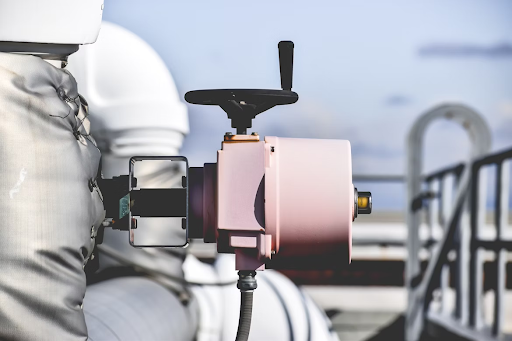Durability is a fundamental concern when selecting components for heavy-duty equipment. These machines often operate in demanding environments, requiring parts that can withstand extreme conditions, heavy loads, and frequent use.
Choosing the right materials and design features increases the longevity of equipment and enhances performance efficiency. This guide delves into important factors to take into account when selecting components for heavy-duty machinery, from casters to structural elements, ensuring your equipment meets operational demands without compromising reliability.
Understanding Load Requirements
Every heavy-duty application comes with its own set of load requirements. Understanding these demands helps in selecting components designed to handle the specified weight efficiently. Loading capacity is important; using components that can bear at least double the expected weight provides a safety buffer, preventing premature wear and damage.
Heavy-duty equipment often faces various forces during operation, including dynamic loads caused by motion and static loads when stationary. Thus, evaluating both aspects ensures component integrity under different conditions.
Take into account the frequency of moving the equipment. Equipment used in a manufacturing setting may need components that can handle frequent shifts in position without losing function.
Choosing the right materials is part of this equation; steel casters are often preferred for their strength, but other materials like polyurethane offer excellent shock absorption for smoother rides on uneven surfaces. The choice should reflect both the load requirements and operational dynamics, ensuring longevity and performance.
Importance of Compatibility and Interchangeability
Choosing components that are compatible and interchangeable with existing equipment is vital for both performance and maintenance efficiency. Using parts that fit seamlessly reduces assembly time and minimizes the need for adjustments during installation.
It’s vital to ensure that new components are designed to work well with existing machinery and operational systems. Compatibility leads to improved equipment interaction, ensuring that parts do not interfere with or hinder other components’ functions. Interchangeability becomes particularly significant when considering future maintenance or repairs.
Having access to a range of options from various manufacturers allows for greater flexibility in sourcing replacement parts without significant downtime. Whether that’s RWM Casters & Wheels or different products from different manufacturers, it can facilitate easier replacement, enabling continual operation without being tied to a specific supplier. Evaluating the compatibility of components during the planning phase ensures that maintaining equipment remains uncomplicated and efficient moving forward.
Standardized components simplify inventory management and reduce the need for specialized storage or training. Teams can perform repairs faster when parts share uniform dimensions and specifications.
This enhances operational efficiency and minimizes human error during assembly or replacement. Businesses that prioritize compatibility experience fewer production delays and lower maintenance costs.
Selecting Suitable Materials
Material selection plays a critical role in the durability of equipment components. Components must be manufactured from high-quality materials designed to withstand harsh environments. Commonly used materials include steel, aluminum, and various high-performance plastics, each with unique advantages.
Steel offers superior strength, making it ideal for applications where heavy loads and impacts are common. Aluminum, being lighter, is useful where weight savings are vital without compromising much on strength. When considering different products from different manufacturers, one should evaluate corrosion resistance.
Equipment operating outdoors or in humid conditions benefits from materials treated against corrosion, such as galvanized steel or stainless steel. Plastics can be suitable for specific non-load-bearing applications, offering advantages like resistance to chemicals and lightweight construction. Always look for material certifications to guarantee reliability and compliance with industry standards, enhancing trust in component selection.
Evaluating Design Features
The design of components significantly influences their functionality and durability. Proper design integrates features such as load distribution, structural integrity, and ease of maintenance.
Heavy-duty casters with a robust wheel design can spread weight evenly, minimizing stress on specific points and preventing premature failure. Enhanced design features, such as sealed bearings, protect internal components from dirt and debris, thus extending component life. Braking systems are another design consideration in moving equipment.
Effective brakes ensure the safe operation of heavy machinery in preventing uncontrolled movements. The design needs to take into account user convenience. Components easily accessible for maintenance save time and reduce operating costs.
In most cases, tailored designs that meet specific operational requirements yield the best results, ensuring efficiency and longevity of equipment. Selecting components with intelligent design features enhances durability.
Cost and Investment in Quality
Cost is often a primary factor when selecting components for heavy-duty equipment. While it’s tempting to choose the least expensive options, investing in quality components typically leads to better long-term performance and cost savings.
Higher quality parts are designed to last longer, reducing the frequency of replacements and maintenance costs. Since heavy-duty equipment operates in demanding environments, the initial investment in superior materials and reliable components often pays off through reduced operational disruptions.
Think about the total cost of ownership (TCO) rather than just the upfront expense. TCO includes maintenance and repairs, energy use, and potential downtime costs associated with component failure. Selecting durable, quality products can minimize these costs significantly.
Establishing a long-term relationship with reputable suppliers creates opportunities for favorable pricing on vital components, allowing businesses to maintain efficient operations while controlling costs effectively. Comprehensively analyzing costs relative to the quality and durability of the components can lead to better budgeting and more strategic purchasing decisions.

Regular Maintenance and Re-Evaluation of Components
Routine maintenance is vital for sustaining the performance and durability of heavy-duty equipment. A regular evaluation schedule allows operators to identify signs of wear and tear early, preventing potential failure before it occurs.
Inspecting components such as wheels, frames, and more for damage or fatigue should occur at intervals suitable for the equipment’s operational demand and complexity. Integrating preventive maintenance practices significantly reduces downtime and prolongs the lifespan of components.
As technology advances, reevaluating component choices is important to optimize performance continually. New materials and designs frequently enter the market, offering solutions that may outperform older components significantly. Remaining open to updates ensures that the equipment remains competitive, reliable, and efficient.
A well-maintained and regularly evaluated machine increases trust in its operational capabilities and enhances productivity. You may assure the optimal performance and longevity of your heavy-duty equipment by carefully examining the following factors: load requirements, material selection, design features, compatibility, cost, and the importance of routine review.

